
|
| |
|
|
|
|
 |
|
|
Boys & Their Toys: A D-Day Display Game
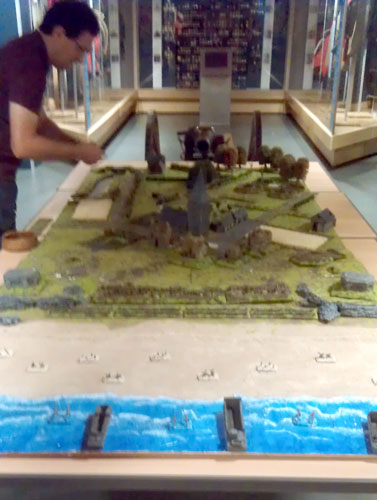 |
Boys & Their Toys:
A D-Day Display Game
with Sean Pringle Kosikowsky & Nic Tall
Our local museum, the Museum of Somerset, was looking to hold a Father's Day event with a Boys and Their Toys theme. The concept was simple; invite a bunch of blokes who had a particularly manly or geeky hobby along to the museum and get them to exhibit it for the public to see if they’d like to get involved. On display were vintage cars, Lego, model trains but when they approached a group of local wargamers, the idea of a 70th Anniversary D-Day battle was hatched.
|
The Museum already had an excellent military exhibit; hosting the Somerset Light Infantry's (or SLI) Regimental museum which told the story of the SLI from its formation, through 19th century conflicts, into the First and Second World Wars and right through to the present day. What better place could there be to hold a Flames Of War D-Day battle?
It was decided that we’d run the D-Day game on a custom built table, 4
feet wide and 9 feet deep. We could then not only show the beach
landings but also some of the airborne actions further inland.
|
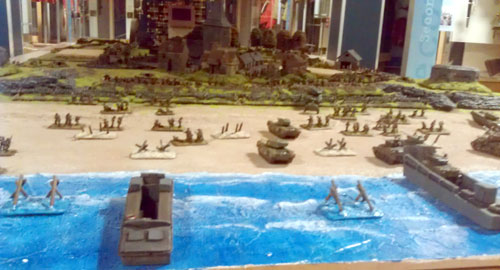 |
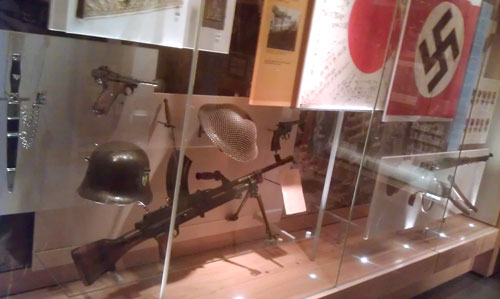 |
Rather
than run a strict historical re-enactment, we opted to illustrate
several different actions from the invasion; in order give visitors a
real feel for the scope of the campaign.
We also decided not to run with historical army lists so we could to
keep the action flowing by bringing on reserves when necessary. This
would allow us to show off the full range of models in our collections
(well, those that would have been in Normandy, our Soviets were forced
to sit this one out!).
|
With the table set-up and the German defenders in position, the first wave of landing craft hit the beach and deposited the first of the British Rifle/MG teams, who subsequently raced as fast as they could across the open sand. However, at atop the beach were German fortifications manned Grenadiers and HMGs. The first wave of British were quickly pinned down and consequently wiped out. The first lesson of D-Day was learned, being dug-in behind fortifications is much easier than crossing open ground.
|
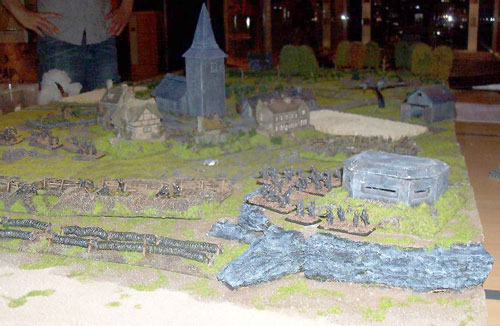 |
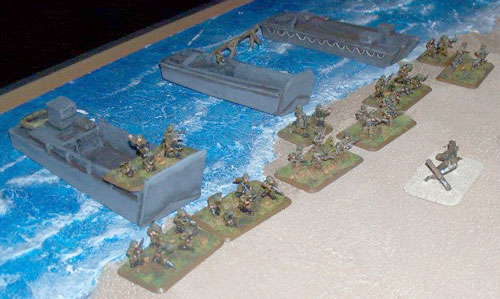
|
While the British were finding it hard going on the beach, the American Airborne units were dropped further inland. They had two objectives to take and hold; a bridge and an anti-aircraft battery. Unfortunately they missed their Drop Zone and spent the first few turns rallying troops before moving on to their objectives.
|
| Following the
disastrous first wave, the Allied Commanders next sent in some Churchill tanks
to support the infantry. These fared much better against the German defences
and were able to soak up incoming from the 8.8cm guns situated on the cliffs overlooking
the beach. As the Churchills kept the defenders busy, more reinforcements were
able to make it ashore including a handful of Sherman tanks and US Rangers.
Constant pressure from Allied air support weakened the German frontline, and
with Sherman tanks laying down an effective smoke screen on the German bunkers
housing the 88s the volume of fire directed at the beach was dramatically
reduced. |
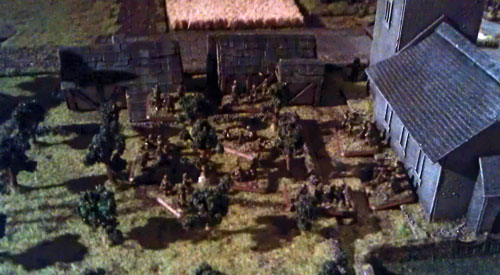
|
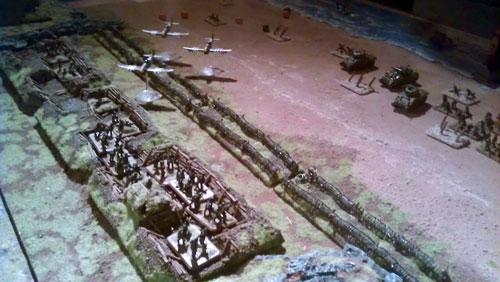 |
| Meanwhile, the
American airborne had made contact with the Fallschirmjäger defending the buildings
by the bridge. A fierce fire fight ensued, but with superior numbers the
Americans were able to get into position to assault. The gains at the bridge
would soon be under treat however, as a platoon of Panzer IVs were called up
from reserve and were soon rumbling across the bridge, and had the paratroopers
ducking for cover in nearby the buildings. |
| Back on the beach,
the Churchills were beginning to overwhelm the German defences. While the 88s
had knocked-out several Shermans on the beach, wave after wave of troops
rolling off the landing craft were starting to make their presence known. As the US Rangers had begun scaling the
cliffs to eliminate the gun emplacements, the British pioneers had cut a way
through a section of the barbed wire at the head of the beach while the Royal
Marines pushing up on one flanks with the intent of moving inland. |
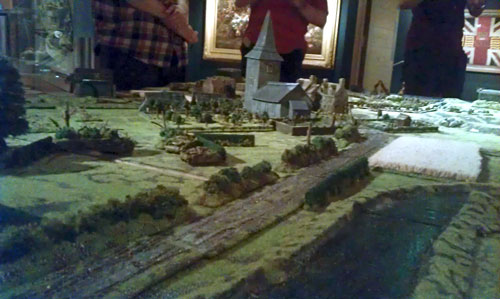 |
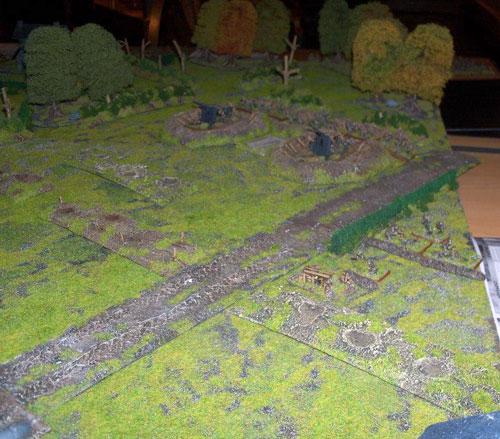 |
| Feeling the pressure,
the German commanders had to make a decision on how to deploy their infantry in
the village close to the beach. But instead of reinforcing the precarious
situation at the beach they decided to send the extra infantry and some armour
to reinforce the anti-aircraft battery which was now under fire from a second
platoon of Allied airborne troops. While German infantry in the village were
able to dig-in and mount a stout defence, a lone Churchill Crocodile made it
into the village square and began to liberally burn down anything it could see.
It was agreed that nothing says "We're here; you can give up now!" quite
like a tank parked in a village and razing everything to the ground. |
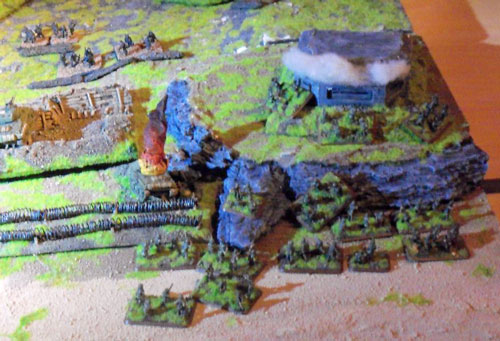 |
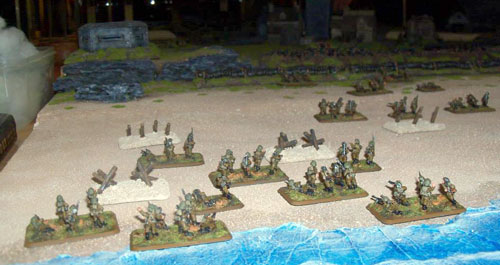 |
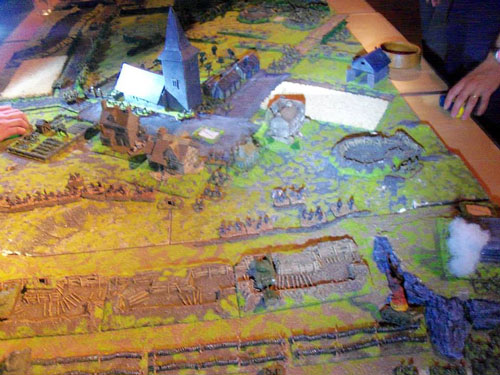 |
With the beach defences
overwhelmed, the village (at least what was left of it) successfully captured,
and the Airborne having making headway inland, it was agreed that the Allies
had won the day.
We had shown off different aspects of D-Day and wargaming to many interested
onlookers in the surroundings of the Somerset Military Gallery. How often do you get to wargame in front of a
19th Century cannon and with five Victoria Crosses in the room?
~ Sean & Nic. |
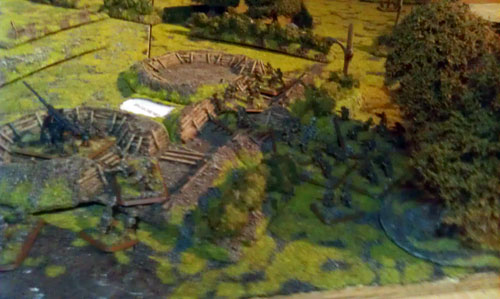 |
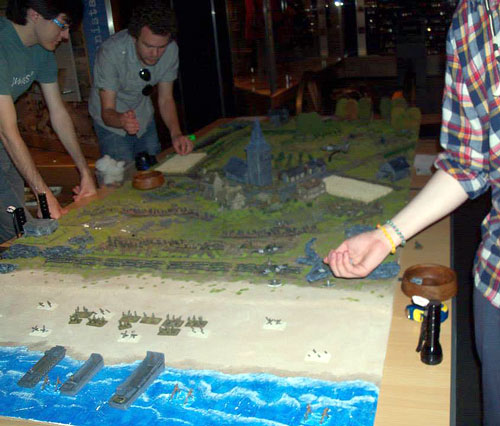 |
Last Updated On Tuesday, July 29, 2014 by Blake at Battlefront
|
|
|